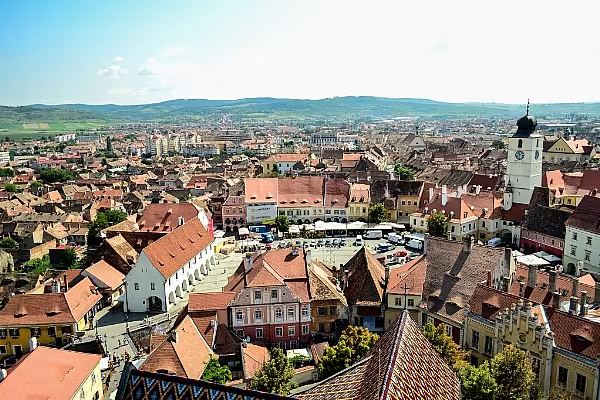Economic growth in the European Union’s eastern members picked up in the third quarter as rising wages propelled consumer spending.
Four of the region’s six countries releasing third-quarter gross domestic product data on Tuesday will report accelerating annual growth rates, according to Bloomberg surveys. Romania delivered the first surprise announcing growth of 8.8 percent, significantly exceeding estimates of 6.2 percent. Growth in the Czech Republic was probably unchanged at 4.7 percent and in Hungary it was 3.7 percent, according to estimates.
Recovery Fuels Demand
The EU’s former communist members are picking up speed as the recovery in the euro area fuels demand for their exports while loose fiscal policy and record-low unemployment buoy consumer spending at home. The resulting increase in wages is helping the region grow faster than their richer counterparts, but some, like Romania, risk faster inflation that may constrain growth in the future.
“The engine of growth is not just domestic demand, but also external demand," Erste Bank Group analysts led by Zoltan Arokszallasi said in a note. "Bear in mind, the all-time highs in German sentiment indicators and the fact that the Czech Republic, Slovakia and Hungary ship more than 20 percent of their exports to Germany.”
Romania Growth
Romania eclipsed other EU members as the bloc’s quickest-growing economy as tax cuts and wage hikes boosted consumption. Still, risks are piling up, with rising imports widening the current-account deficit. Central bank Governor Mugur Isarescu warned last week that, to ensure growth is sustainable, the Balkan state must address a labor shortage, increase its use of EU development funds and refrain from stimulating consumption further.
The leu gained 0.1 percent against the euro after the data were release, after loosing almost 1 percent this month because of fiscal uncertainties and rising imbalances in the economy. The Hungarian forint and Polish zloty were both less than 0.1 percent stronger before the GDP data.
In Hungary, the expansion is recovering after a blip in the second quarter as a shortage of workers triggered a 13 percent jump in wages through August. Construction grew 28 percent as Hungarians continued to shift savings into real estate. Poland’s economy is seen soaring 4.5 percent in the third quarter from a year earlier, a pace unmatched in almost two years.
Moderation
Economists predict growth will moderate in the coming quarters as wage growth drives inflation higher and prompts central banks to tighten monetary policy. The European Commission forecast last week that growth will slow in all eastern EU members. It said Romania would be hit hardest, with growth decelerating to 4.4 percent in 2018 from 5.7 percent this year.
Economists expect the Czech central bank to raise benchmark rate by additional 50 basis points throughout 2018, according to a Bloomberg survey. Tighter monetary policy and fiscal consolidation is also predicted in Romania, which risks breaching the EU’s 3 percent budget-deficit limit.
“Some of the recent props to growth in parts of the region won’t be sustained,” said Liam Carson, an economist at Capital Economics Ltd. in London. "With the region’s economies now operating at close to full employment, strong consumer demand is likely to increasingly feed into faster import growth, dragging on overall GDP growth.”
News by Bloomberg, edited by ESM. Click subscribe to sign up to ESM: The European Supermarket Magazine.














